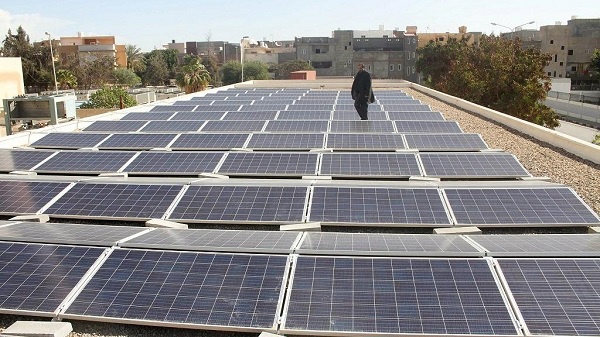
Independent Power Producers (IPPs) hoping to take advantage of the country’s open-handed feed-in-tariff regime for solar energy may have to revise their plans as national transmission infrastructure can accommodate only 550 megawatts of all forms of renewable energy.
The Energy Commission has issued IPPs provisional licences for a total of 3,907 megawatts of renewable energy including wind, biomass and waste-to-energy. Out of this, over 2000megawatts are in respect to solar energy.
The Energy Ministry however says it has conducted a “comprehensive study” that shows only 550megawatts of not just solar, but the other forms of renewable energy can be fed into the national grid, taking into account “current constraints."
The Minister for Energy and Petroleum, Emmanuel Armah-Kofi Buah, says the Energy Commission and the Public Utilities Regulatory Commission have to, in keeping with the 550 megawatt limit, “streamline and issue realistic generation capacity permits to IPPs."
The Executive Secretary of the Energy Commission, Dr. Alfred Ofosu Ahenkorah, told the B&FT that the commission did not state any capacity in any of the licenses it has given.
“What it means is that we have not guaranteed any capacity. Before you are given the capacity, we have to look at the site -- where you are going to locate it. We have the big transmission grid, and then we have the local distribution system; they can take different capacities. If it is going to be connected to the transmission grid, the capacity is different from the distribution system.
So, at the sitting stage, we determine what capacity can be evacuated from that site without harming the system. So that will be done at the sitting stage, and it is not all of them [IPPs] that have gone through the sitting; only two of them have. So we will be determining the capacity at the sitting stage.”
The minister said at the Meet the Press Series on Tuesday that: “It is interesting to point out that the development of solar farms is the most sought-after by these IPPs with total capacity of over 2000MW, and this is possibly due to the rather high feed-in-tariff of GHp40.21/kwh and the short lead time for construction”.
Even though it is said to be coming down significantly, the cost of solar is still way higher than that of other forms of energy like hydro, coal and thermal -- a reason critics believe it could send tariffs over the rooftops for consumers.
Germany, a global leader in the adoption of renewable energy, including solar, is said to be paying a heavy price for its ambitious goal of producing 80% of its electricity from renewable sources by 2050.
The European country’s quick embrace of renewable energy is said to have caused utility rates to skyrocket, but still leaves a reliance on carbon-producing gas and coal plants during high-demand times.
Aside from increasing cost for consumers, grid-connected solar requires large tracts of land for the mounting of Photovoltaic (PV) panels. For just 2megawatts of solar energy at Navrongo for the national grid, solar panels had to be mounted on 3.4 hectares of land. And it cost the country about US$9m when a megawatt of thermal energy costs about US$1million.
Some experts advise instead that government should encourage solar for off-grid deployment, where individual organisations and homes would mount solar panels on their rooftops to supplement their power needs.
The government has equally been advised to adopt solar for remote off-grid rural communities while it concentrates on cheaper forms of energy for the national grid.
Solar technologists are aggressively seeking markets in Africa, and in doing so they are seeking to take advantage of feed-in tariff regimes like Ghana’s.
Indeed, B&FT sources indicate that some of the companies are asking for tariffs higher than what Ghana has gazetted.
German solar technologists, backed strongly by their government, have been aggressively seeking entry into the Ghanaian market.
The German government, last year, gave Ghana €1.8million to support implementation of the country’s Renewable Energy Act, which envisions a 10% penetration of solar, wind and biogas in the energy mix by 2020.
Eight German PV companies visited the country recently and held discussions with various government agencies -- and their focus is on grid-connected solar, which is much more convenient and, as it were, guarantees a quicker return on investment. They have since been training Ghanaian technicians on how to install grid-connected solar panels.